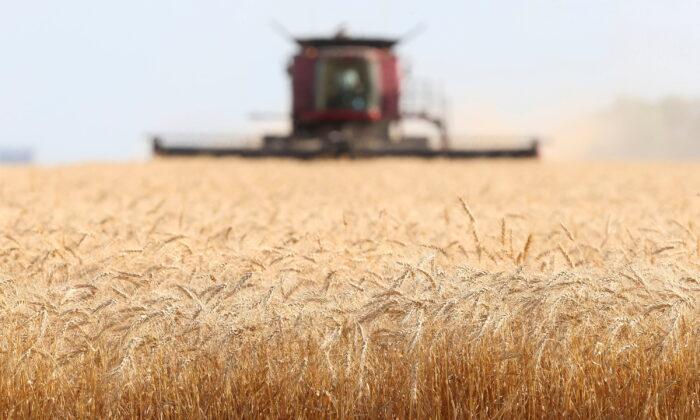The federal government’s Sustainable Agriculture Strategy is causing concerns for agricultural producers, given its potential impacts on farm practices.
The first is to make the agriculture industry “resilient to short and long-term climate impacts.” The second is to improve “environmental performance” while “contributing to the environmental, economic and social benefit” of Canadians. Ensuring the agriculture industry remains “competitive” as it does its part to align with Canada’s greenhouse gas (GHG) emissions reduction targets is the third.
The fourth goal is a more comprehensive and integrated “value chain” across programming, policy, and partners, while the fifth is to improve data captured to measure, report on, and track environmental performance in the agriculture and agri-food industries.
Brett Halstead, a farmer near Nokomis, Sask., and chair of the Saskatchewan Wheat Development Commission, said the document has “big and fluffy” language that may compromise other stated government objectives.
“The government’s set some pretty lofty goals for growing our export value of the commodities we produce, and they talk about producing food for the world,” Halstead said in an interview.
At the same time, “There’s just something here that doesn’t pass the smell test, that we’re going to put a whole bunch of shackles and chains on people in the name of more sustainability and more environmental protection.”
“It was mostly on their Indo-Pacific strategy, but we did talk a little about how we supply our worldwide customers if things keep getting tightened up as far as the rules in this country. The ag minister told me and the others in that meeting that they would not be [using an] EU type of model on environmental and sustainability stuff,” he said.
Phase one of public consultations will end March 31, and a draft version of the strategy will be published by the end of 2023. An advisory panel of 20 organizations has already been formed, and it includes the Grain Growers of Canada (GGC).
GGC chair Andre Harpe, who farms oilseed crops and grains near Vauxhaul, Alberta, said he is glad to be at the table.
“Anytime the government wants to see what producers think, it’s not a bad thing because we do need to work together on this,” he said.
“Obviously they’ve got things they want to talk about, things that they want to bring forward. But as long as they are willing to listen to what producers think can work, I think we can go ahead with this.”
The discussion paper invites farmers to suggest changes to regulation to “accelerate environment and climate action” while calling for “activities that increase farmers’ access to the information, advice, and training they need to effectively implement practices on their farm that advance environment and climate outcomes.” As examples of such activities, it lists “agricultural extension, demonstration sites, regional climate risk assessments, on-farm GHG calculators, life cycle analyses.”
Culture Change for Farms
The heavy involvement of government in farming represents a large culture change for farms in the west that began on homesteads a century ago with little help or requirements from the government.“We’ve been used to doing it ourselves, and I guess we’re seeing ourselves under more and more scrutiny. Just the way this world is going, we’re going to have to learn to live with some of that,” Harpe said.
“People are also going to have to recognize if they want a relatively cheap food policy, that there are certain things that we have to do to produce food, and we have to continue with some of these practices.”
Yet, the government also wants some of these practices to change. The paper calls for “direct financial incentives to farmers” to “establish and maintain on-farm practices that support climate and environmental outcomes.”
Gunter Jochum, chair of Western Canadian Wheat Growers, says he found Bibeau’s comments contradictory.
“The first little phrase ... acknowledges that we are already resilient to climate change. And then that begs the question, ‘Why do we need government help to do this? Why do we need taxpayer money to advise farmers to do what they’re already doing, and doing quite well?” Jochum said in an interview.
“The second sentence there ... this is the European model, and somehow our government thinks that emulating or following the European model is somehow going to help the environment and make things better for consumers. But actually, it’s quite the opposite.”
The Epoch Times contacted Agriculture and Agri-Food Canada to seek comment but didn’t receive a reply by publication time.
Jochum, who farms 50 kilometres west of Winnipeg, said Canadian farmers already operate efficiently amid strict regulations, and further burdens would only send production elsewhere.
“The grains and oilseeds we grow already face rigorous testing by our regulatory agencies, and they pass muster, and they are of highest quality and adhere to the strictest, strictest standards. How can we make that even better? It boggles the mind,” he said.
“The world still needs the grain that is produced, and every day, every year, they need more grain. And so if we scale back output here in Canada, in Holland, in Germany, in the advanced countries, that production shifts to other jurisdictions where maybe that regulatory oversight, the strict, high-quality standards, aren’t there. And is that better for the consumer? Is that better for the environment?”





